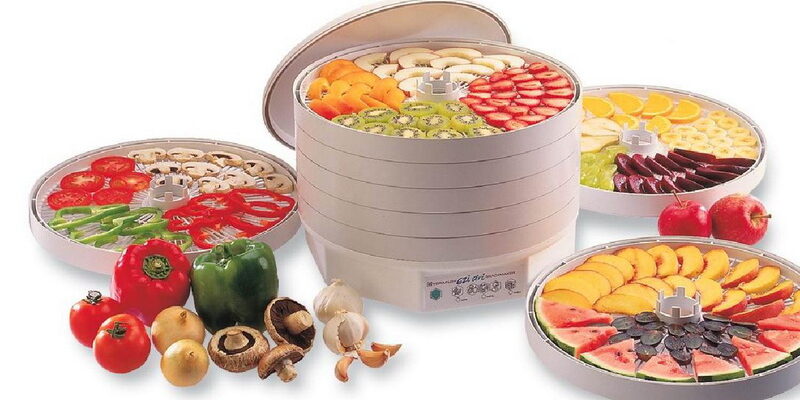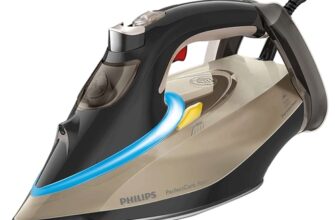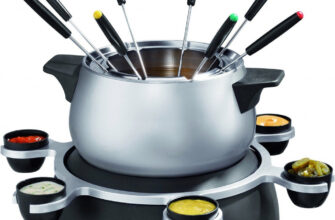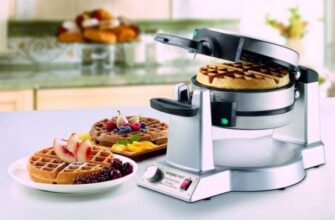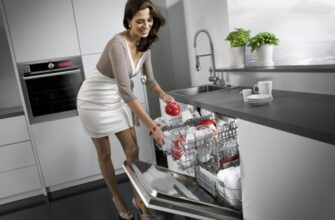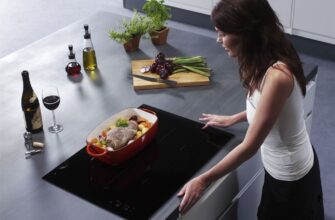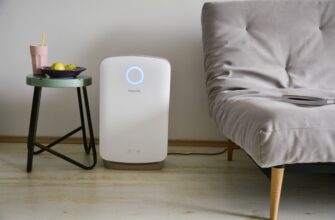When choosing an electric dryer, you should first of all pay attention to its type, since it is he who determines the taste of the finished product.
- content
- How to choose an electric dryer for vegetables and fruits: the main criteria
- Advantages of Electric Vegetable Dryer
- Types of electric dryers
- Heating dryers
- Advantages
- disadvantages
- Convection dryers
- Advantages
- disadvantages
- Infrared Dryers
- Advantages
- disadvantages
- Dryers-tablecloths
- Advantages
- disadvantages
- Electric dryer selection parameters
- Power
- Number and depth of trays
- Location of trays
- Vertical Tray Dryers
- Advantages
- disadvantages
- Dryers with horizontal trays
- Advantages
- disadvantages
- Body material
- Plastic case
- Advantages
- disadvantages
- Metal case
- Advantages
- disadvantages
- Temperature modes
- Continuous temperature control
- Additional functionality
- Summary: how to choose an electric dryer for vegetables and fruits
- Top manufacturers
- Video on the selection of dryers for vegetables and fruits
content
- How to choose an electric dryer for vegetables and fruits: the main criteria
- Benefits of an electric dryer
- Types of electric dryers
- Electric dryer selection parameters
- Additional functionality
- Summary: how to choose an electric dryer for vegetables and fruits
- Top manufacturers
- Video on the selection of dryers for vegetables and fruits
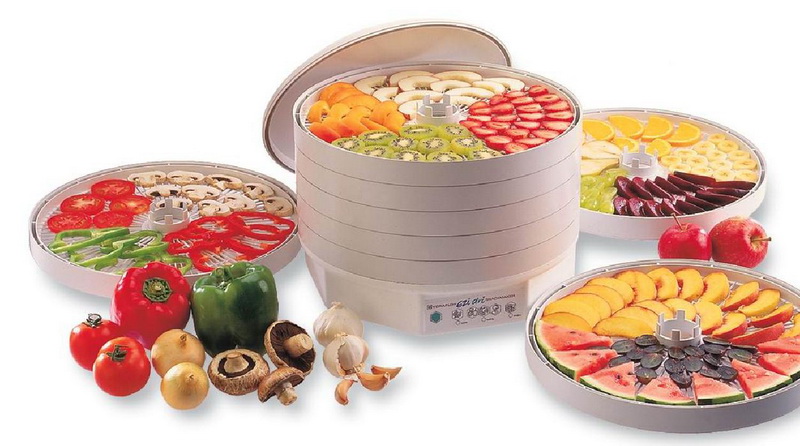
!
We recommend that you familiarize yourself with the rating of the best dryers for vegetables and fruits.
How to choose an electric dryer for vegetables and fruits: the main criteria
When choosing an electric dryer, you should pay attention to its following technical characteristics and functional features:
-
View (infrared, convection, heating, tablecloth dryer);
-
Power;
-
Number and depth of trays;
-
Location of trays;
-
Body and trays material;
-
Temperature modes of operation;
-
Possibility of smooth temperature control;
-
Control type (electronic, mechanical);
-
Additional functions.
-
The manufacturer of electric dryers is also important.
Advantages of Electric Vegetable Dryer
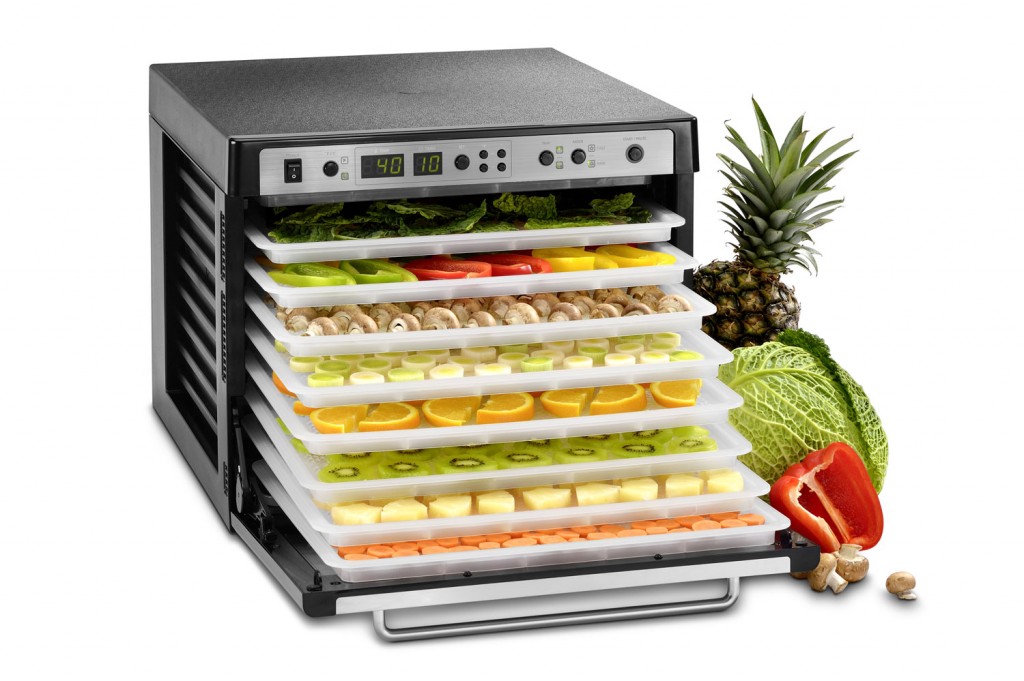
Modern electric dryers for vegetables, fruits and other products have a number of advantages over the classical methods of preparing such dishes (namely, hanging dried, drying in the oven or under the sun).
-
The main advantage is a high speed of drying while maintaining the taste of the product. For example, apples take only a few hours to cook, while they would lie in direct sunlight for a couple of days. And in the oven, these fruits would simply bake.
-
The second advantage is weather independence. You can dry fruits, vegetables, meat and other foods even on a rainy day.
-
The third advantage is the lack of contact with insects. Indeed, by hanging fruits, vegetables or mushrooms on the balcony, you can attract flies from all over the city to them. And even more meat and fish gather flocks of midges. In this way, food cooked in an electric dryer becomes so hygienic that it can be eaten without prior washing.
Also worth mentioning is the possibility of temperature control. This allows drying both very quickly and gradually. Of course, the taste of products cooked under different temperature conditions will differ.
Types of electric dryers
Structurally and according to the principle of operation, there are four types of electric fruit dryers – heating, convection, infrared, tablecloth dryers.
Heating dryers
Heating – the simplest structurally and the most inexpensive dryers. A heating element is simply installed in them, which creates a high temperature. Under its action, the products are dried.
Advantages
-
Simple and durable design.
-
High power consumption.
disadvantages
-
High power consumption.
-
Deterioration of the taste of the product is the most important drawback of heating dryers. That is why they are practically not represented on the market now.
-
Strongly spoil the taste of dried products due to the lack of artificial air convection.
Convection dryers

Convection – a logical development of heating dryers. In addition to the heating element, a fan is installed in them, which ensures the movement of hot air. These dryers are versatile and suitable for almost all products – from fruits to mushrooms or meat.
Advantages
-
Natural taste of products;
-
You can dry several different types of food in one device.
-
Versatility.
-
High drying speed.
disadvantages
-
High power consumption;
-
Hot air can destroy some vitamins and other beneficial trace minerals in fruits.
!
Nonetheless, convection dryers are one of the best options for home use.
Infrared Dryers
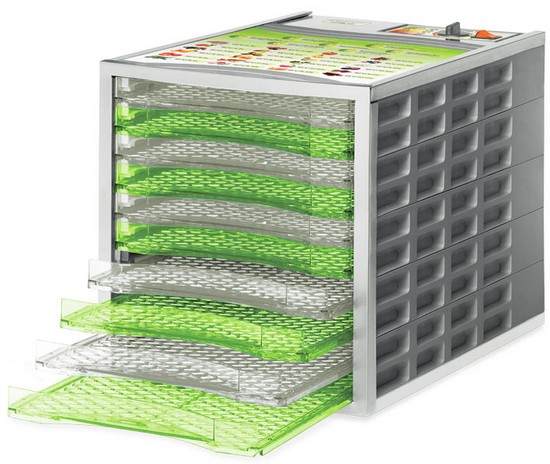
Infrared dryers act on the products prepared in them with a stream of directed infrared radiation. Therefore, moisture from vegetables from fruits evaporates, but their color, taste, even in some cases, the size and vitamins with useful trace elements are preserved.
Infrared dryers are suitable for infrequent household use. They will be a great option for people who want to preserve excellent taste and healthiness of products.
Advantages
-
Natural taste of products;
-
Preservation of vitamins and nutrients;
-
You can dry a variety of types of food, including at the same time (in some models);
-
Preservation of the natural appearance and color of products;
disadvantages
-
Long drying time (up to several days for some products);
-
The high cost of the device;
-
Large dimensions of the device;
Dryers-tablecloths
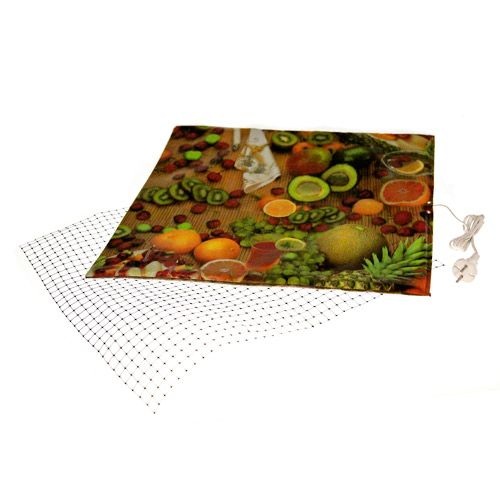
A tablecloth dryer is one of the options for implementing an infrared dryer. The emitters in it are installed in a flexible, expandable substrate. The products that are planned to be dried are stacked on it.
Such dryers are only suitable for products that can safely withstand extended exposure to the outdoors. For example, apples may darken when cooked using such a device. But carrots or mushrooms will retain their taste and appearance, so they can be dried on such a tablecloth.
Advantages
-
Natural taste, appearance and color of products;
-
Relatively low power consumption;
-
You can dry different types of products (including at the same time on large tablecloths);
disadvantages
-
Very long drying time;
-
Relatively low efficiency;
-
Takes up a lot of table space;
Electric dryer selection parameters

When choosing an electric dryer, you should pay attention to the following technical characteristics of the device:
-
Power (for heating and convection dryers);
-
The number and depth of trays (determine the practicality of the device);
-
Arrangement of trays (vertical or horizontal);
-
Device case material (plastic or metal);
-
Temperature conditions;
-
Possibility of smooth temperature control.
The practical and operational qualities of the dryer are also influenced by additional functions such as the marshmallow mode or the automatic shutdown timer.
Power
The power of the heating element is the most important parameter that determines the speed of cooking products in heating and convection dryers. For infrared devices, it does not really matter, since in this mode the intensity of processing vegetables and fruits depends rather on the operating parameters of the emitter.
The vast majority of household dryers for vegetables and fruits have a capacity of up to 1 kW. But such devices simply do not need such performance. In most cases, 400-500 watts are sufficient for drying plant products. But this is true for devices with 3-5 trays.
But if you plan to use a dryer for drying meat, fish, some types of fruits or berries with a high amount of moisture in the composition, you should pay attention to more efficient models designed for 700-1000 W. The same is true for dryers with 6 or more trays.
It is worth remembering that the more powerful the dryer, the higher the power consumption.
Number and depth of trays
The volume of products that can be simultaneously processed in the dryer directly depends on the number of trays. For periodic home use, models that are designed for 5-7 containers are suitable. But on farms, the productivity of such a dryer is not enough; a device with 15-20 trays is required. But they must be equipped with powerful heating elements of 3-5 kW, which will lead to increased energy consumption.
The depth of the trays determines the size of the food pieces that can be placed in the dryer. For most households, models will be sufficient, the height of the containers in which is designed for 3-5 cm.
In addition, large chunks of food tend to dry less well – they may have a patchy texture when finished, when the edges are excessively 'toasted' and there are still damp areas inside. They do not store well and can deteriorate over time.
As a consequence, it is not recommended to select dryers with extremely deep trays, nor to handle very large pieces of food.
Location of trays
Despite the fact that structurally trays in dryers are almost always placed 'in a column', depending on the location of the heating element or convector, they differ into vertical and horizontal.
Vertical Tray Dryers
In dryers with vertical trays, the heating element is located above or below the column of containers, and the air flow passes through them. This is one of the most common designs.
Advantages
-
Low price;
-
Compactness.
disadvantages
-
Not suitable for drying several types of foods with bright flavors or aromas at the same time, as they 'mix';
-
For high-quality drying, you will need to periodically rearrange the trays.
-
To assess the readiness of the product, you will need to disassemble the structure;
In addition, dryers with an underfloor heating element or convector require careful handling. Do not spill or spill anything on it. Therefore, they are not suitable for drying juicy vegetables or fruits (such as chopped tomatoes).
Dryers with horizontal trays
In dryers with horizontal trays, the heating element or convector is installed on one of the walls, and the blowing occurs in the same plane as the products (and not perpendicular to them, as in a vertical structure).
Such dryers are an ideal solution if you plan to process various juicy products in them, such as tomatoes and some types of fruits.
Advantages
-
Extremely low risk of damage to the convector;
-
You can cook marshmallows or other 'liquid' based foods due to the absence of holes in the trays;
-
Easy access to lower trays;
-
Lack of 'mixing' the tastes of the products;
disadvantages
-
High cost;
-
Lack of scalability by adding new trays.
Body material
The material from which the dryer body is made does not directly affect the performance of the device. But its practicality depends on it. The dryer body can be made of plastic or metal.
Plastic enclosures are most commonly found in vertical-tray dryers. Indeed, in fact, it is these capacities that form the body of the device. And, in order not to overheat, they are made of plastic.
Plastic case
Models, the body of which is made of transparent plastic, allow you to visually assess the readiness of products without disassembling the structure. However, over time, they additionally lose their attractiveness due to scratches and similar damage.
Advantages
-
Low price;
-
Low weight;
-
Easy to clean;
disadvantages
-
Low resistance to mechanical stress, such as shock or similar damage;
-
Not always attractive appearance.
Metal case
The metal body does not make the dryer more durable, but it does improve some other practical qualities. Dryers with a horizontal arrangement of trays are most often made in a metal case.
Advantages
-
Attractive appearance;
-
Resistance to mechanical damage.
disadvantages
-
High cost;
-
Any dirt on it is very noticeable and poorly washed;
-
High weight;
Temperature modes
To ensure the brightest taste of products, as well as to preserve vitamins and other useful substances, it is recommended to dry them under different temperature conditions. Therefore, it is desirable that the dryer be equipped with a suitable regulator.
However, an extremely large number of temperature settings is simply not needed for a dryer. Basic enough:
-
30-35 degrees – for drying chopped herbs;
-
50-55 degrees – for drying vegetables;
-
55-60 degrees – for drying fruits;
-
65-70 degrees – for drying meat, fish, as well as some types of bulk products.
It is self-evident that if, for example, it is not planned to dry meat, fish and herbs, a very simple device with one or two temperature conditions in the range of 50-60 degrees is sufficient. But for more possible applications, it is worth paying attention to models with an expanded range of heating intensity options.
Continuous temperature control
If the dryer will be used to process several types of products at the same time, as well as to dry some dishes, then it is recommended to choose a model with a function of smooth temperature control.
In this mode, the intensity of heating is increased or decreased gradually, ensuring the best preservation of the taste and other organoleptic characteristics of the product.
If you do not plan to use the dryer in the above options, the corresponding function is simply not needed.
Additional functionality
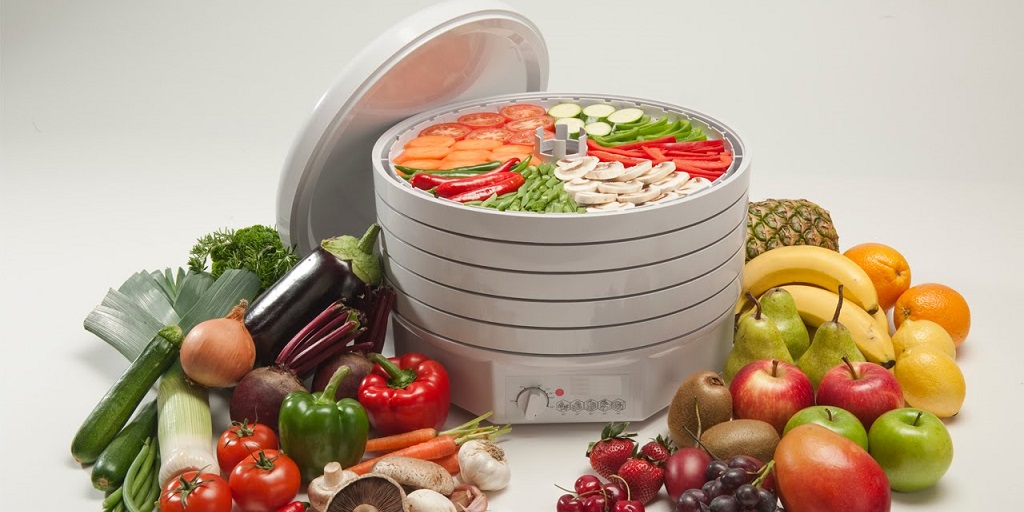
Among the most practical additional functions of the dryer are:
-
The possibility of making marshmallows is most often realized in horizontal dryers. The pallets used in them have no holes.
-
But in convection-type dryers such an opportunity most often cannot be realized for structural reasons. The holes in the trays are necessary for mixing the air, and when they are covered with a layer of marshmallow, the device may simply overheat.
-
The possibility of drying meat or fish can be realized in both types of dryers. It implies a special temperature regime and a special intensity of air convection. Most often, it is implemented precisely 'at the software level'.
-
The system of supplying hot air directly to the trays speeds up the drying process, but changes the taste of the products. It is designed for fast processing of foods that are not 'cooked' such as herbs or mushrooms.
-
The material of the trays for the horizontal type dryer does not change the drying speed or the taste of the food. Unless plastic trays do not heat up, but they are more fragile – but metal ones, on the contrary, heat up, but they have the highest mechanical strength.
-
Overheating protection is an important feature for vertical dryers. If, for some reason, the high temperature convection between the pallets is disturbed, the heating element may be damaged. Therefore, dryers equipped with this protection are more durable.
-
The auto-off timer is a useful feature for experienced dryer users. It allows, for example, to put food for processing at night, and in the morning to get it dry. However, it is not always possible to 'guess' how long it will take to dry a particular dish.
-
The ability to adjust the height of the pallets is a useful feature if you plan to dry bulky products. But doing this is undesirable for the reasons described earlier. Therefore, the practical benefits of the adjustment are quite controversial.
Summary: how to choose an electric dryer for vegetables and fruits
The simplest and most optimal method for choosing an electric dryer is as follows:
-
Determine the budget. If it is more than 10 thousand rubles, you can safely choose a model with a horizontal arrangement of trays. If less – then with vertical;
-
Determine performance. If you plan to dry no more than a few kilograms of food per week, a model designed for 500-600 W will do. But for processing the entire harvest of apples from grandfather's dacha, a dryer for 1 or more kW is intended;
-
Determine the type of food to be processed in the dryer. If you want to dry several products with different tastes at the same time or cook marshmallow, you need a model with a horizontal arrangement of trays. Otherwise, it will work with a vertical one;
-
Determine the importance of vitamin preservation. If it is critical, an infrared dryer is needed. If not, convection will do.
-
A tablecloth dryer is only suitable for a very small amount of processed food.
-
After determining the type and power, you can pay attention to other characteristics of the device.
Top manufacturers
Among the best manufacturers of dryers are the following companies:
-
Supra, 'Rotor', 'Sukhovey' – produce high-quality budget-class convection dryers;
-
Tefal, Scarlett, Polaris, 'Petromash', 'Voltera' – high-quality convection and infrared dryers of the middle class;
-
Rommelsbacher, Ezidri, Rawmid – top-class high-quality convection and infrared dryers.
-
We can also mention the Katrina company, which produces tablecloth dryers.
!
In the following articles, our experts tell you which is better – a juicer or a juicer and the secrets of choosing a juicer for vegetables and fruits.
Video on the selection of dryers for vegetables and fruits
Attention! This material is the subjective opinion of the authors of the project and is not a purchase guide.

